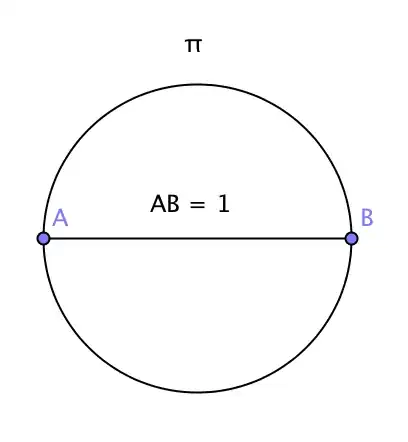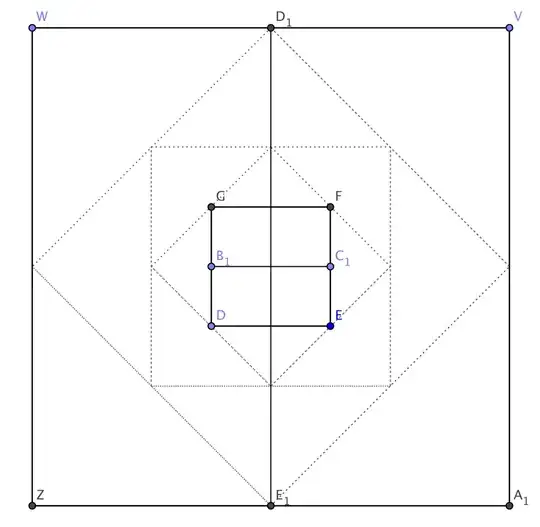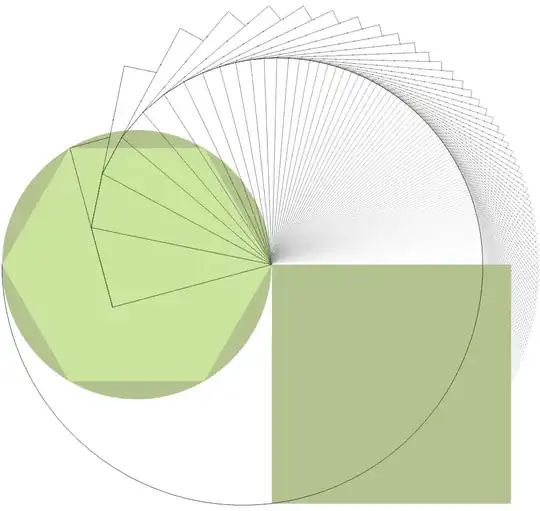a) Let's say I have a circle with a diameter $1$. Then a perimeter is $π$ (pi) and ratio between a perimeter and a diameter is $π$.
b) I want to use π as a diameter of another circle, which gives a perimeter of $π*π = π^2$ and a ratio $\frac{π^2}{π} = π$.
My question is if there are ways to illustrate a progression from a) to b) by continuous geometrical construction. Or, how would you illustrate $π$ squared by geometry?
Added background information
I was thinking if this could be done because fractions can be presented by infinite geometric series, which is true for pi as well (Euler?):
a)
$$\pi =\sqrt{ 6\sum_{i=1}^\infty \frac{1}{i^2}}$$
b)
$$\pi^2 = 6\sum_{i=1}^\infty \frac{1}{i^2}$$
respectively to pictures above.
So why this geometric serial representation:
where (perimeter / diagonal ratio = 4):
c) perimeter (D,E,F,G) = 4 AND diagonal (B1,C1) = 1
d) perimeter (V,W,Z,A1) = c) perimeter squared = 4^2 = 16 AND diagonal (D1,E1) = 4
is fundamentally different from a) and b) which can be expressed as geometric series?
Other background for question is my wondering what does it really mean in real world physics when you use pi squared on equations like centripetal acceleration formula:
$$\frac{T2}{R3} = \frac{4\pi^2}{GM_{central}}$$
but it is really a side matter in this case.
Update 2:
Akiva Weinberger pointed out these practical formulas for pi squared:
- The surface area of a torus (donut shape) is $4π^2Rr=(2πr)(2πR)$
- The volume $2π^2Rr^2=(πr^2)(2πR)$
For Euler equation I found this interesting figure, which is not exactly a progression I was asking, but a progression altogether visual and guide giving:





